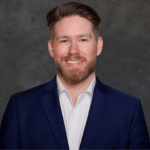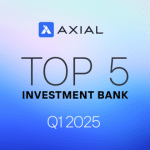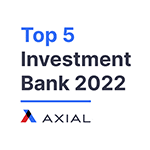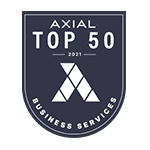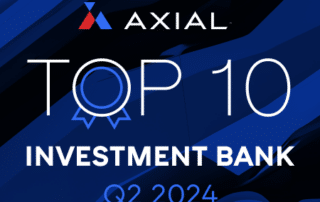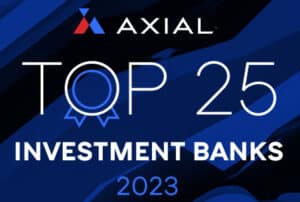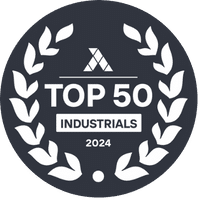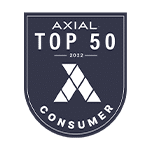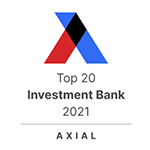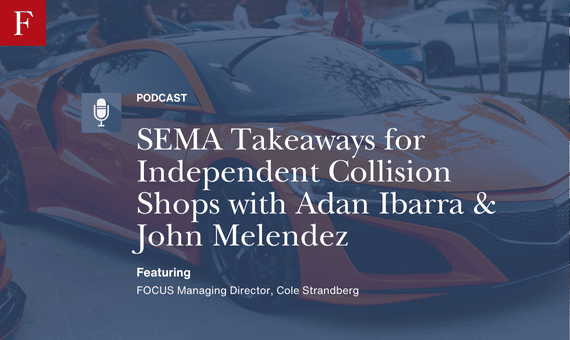
SEMA Takeaways for Independent Collision Shops with Adan Ibarra & John Melendez
On this week’s episode, Cole Strandberg hosts a special “post‑SEMA” edition: two independent shop owners who attended the show, digested the trends, and are ready to act. In this episode: John Melendez, owner of JDM Collision in Illinois, and Adan Ibarra, owner of Leading Edge Collision in Houston. They give us their fresh take on what they saw at SEMA, how they’re thinking about applying it, and what independent shop operators need to watch for as we move into the next chapter of the industry.
Cole Strandberg: Looking forward to a fun conversation. This is a motley crew right here though. You guys are the troublemakers of ICAR at all the events. I know it’s. But you’re an absolute blast and you guys are absolutely crushing it. John, this is your like millionth appearance here on the Collision Vision. So in a very brief period of time. Give us a quick intro.
John Melendez: Once again, Colt, thank you for having me. John Melendez with JDM out of Thornton, Illinois and it’s always a blast. When we sit down. We have the opportunity to talk with you.
Cole Strandberg: I will link our previous episodes in the show notes too because you’re doing some amazing things. You’re all over the press, you’re all over speaking engagements, some of which we’ll talk about here in just a minute. Adan, you’re. This is your first time on the show. But that’s my fault. You should have been on here a few times before. We’d love to hear about you and your background as well before we dive into our more SEMA oriented content.
Adan Ibarra: Sure. Thanks Cole for having me. You’re too kind, man. I’ve been waiting for this moment.
Cole Strandberg: I know it, I know it. You got a great story too. Let’s hear it. Give us your background. Tell us about what you guys have going on.
Adan Ibarra: Just a quick story, I guess. I’m the owner of Leading Edge collision in Houston, Texas. I bought it in the middle of COVID July 2020. So perfect, right? No Hindsight. Yeah, maybe. But yeah, man, I’ve been in the industry since I was 15, started pushing a broom and worked my way all the way up. Right now I’m running a shop and trying to spread the good love of the collision industry all over the different high schools and to young talent.
Cole Strandberg: So yeah, you guys are rocking and rolling. When I think of kind of influencers and industry pillars in our industry, there’s representation among the single shop independents and. And you guys are at the very, very top of that list. Love what you guys are doing. We’ll dive into that a little bit. But first off, let’s jump right into SEMA. You guys are coming off of a busy week at SEMA, as am I. You can probably hear it in my voice. I am under the weather, I’m exhausted, I am struggling. At the same time, just like every year I leave SEMA just absolutely energized and enthusiastic for the future based on what we’re seeing out there, the energy of folks there. John, what was your SEMA experience this year? Tell us about it.
John Melendez: Well, I’m busy for one. Just great with all the camaraderie and having an opportunity to see some of the builders and the cars in between when I snuck out if we weren’t on a panel discussion. But I’ll tell you, just intriguing because the automation part of it, and I’m sure we’re going to get into that later, is really what caught my eye and seems like I couldn’t get enough of what AI is doing to our industry.
Cole Strandberg: No doubt some big changes. Before I move on from that, tell us a little bit about your panels and your speaking engagements as well.
John Melendez: Yeah, I had a few with icar, with Bud center and Mark Miller and one of the main one was as far as the blueprinting process and hopefully trying to get away from the term of estimating which was. It was interesting. It was posted online just recently and a lot of good positive comments came out of that with a lot of single shop operators saying that, that it makes sense on how we’re trying to do things as a team. The team concept and identifying and it really, really increases your cycle times, your efficiency and by identifying all this, you would think the insurance companies would take advantage of that. But these panels were referencing these things that I just mentioned and of course the mentoring too. I did another panel in reference to the mentoring which it’s exciting to even get involved in that portion of it and that I was asked to speak in that regard too. So I did two panels.
Cole Strandberg: Awesome. Man, the celebrity, as always. Adan, talk to me about your week. You were out there for a full week, it sounds like, which is in Vegas time a month for us mere mortals.
Adan Ibarra: Well, I mean, the last three days was just family hanging around, walking the strip and stuff. So it was a little bit less busy and chaotic. But, you know, it was. It was a great show. It was a great show. Just like John said, the AI really stood out a whole lot. Pro spot, obviously. They added another robot to their booth, and then they moved the ADAS area all the way to the back, so everybody was almost forced to walk to that booth. Right. You ended up there, which was really good. Really, really good. I was pretty intrigued about the robots, and I was excited to hear a panel discussion that Bud Centers had about how close we are, you know, and. And you. You’re. We’re always still going to have the human aspect to it, but to see these robots working, it was pretty. It was pretty cool, you know, and then I had the CREF breakfast, which was awesome. Right. It was pretty tough. John was there. It was kind of tough to get through.
John Melendez: Right.
Adan Ibarra: Cole, you know my buddy Jeff Wilson, who passed away from the floods. Cref. They created an award, the Jeff Wilson Award, that was giving. That was given to an instructor that we chose out of Ogden, Utah. So every year they’re going to present a Jeff Wilson Award to a good, you know, high school or vocational school instructor. So that, to me, was probably my highlight, you know, because Jeff did mean so much.
Cole Strandberg: Oh, man. I know a great friend to you guys. Had the chance to meet him in person once. Had him on the podcast as well. And his and his family’s passing was absolutely tragic. Awesome to hear how the industry is getting together in his memory and his family’s memory to continue doing great things for the industry like Jeff always did. A great highlight to have, albeit a somber one, for sure. Now, you guys, obviously independent owners to an extent, you’re aware of kind of the big consolidators when you put on your owner hat and you’re not walking around just having fun looking at the cool builds, but you’re looking at what’s coming down next. And you mentioned AI robotics, all this ADAS stuff as well. Were there any goals coming in to the show on technology or equipment or anything along those lines that you wanted to learn more about, specifically Adan, I’ll start with you. Yeah.
Adan Ibarra: So going into the show, I really wanted to check out the AI integrated scrubbing software. And, you know, we use all data, we use CCC for our estimating, and they utilize some AI stuff, but all data and repair logic for our repair procedures. Right. I’ve heard a lot of good things about Rev as well, and I’ve never really talked to anybody from Rev or shop owners that actually use rev. So for me, the main thing I wanted to do is just kind of see if there was any good AI tools that could help my blueprinters be a little bit more efficient. And there is. There’s decent tools. But at the end of the day, what I’ve found is that they’re still going to have to, you know, do all their checks and balances to ensure that something wasn’t missed. Because the bots, they will miss certain things in the repair procedures. So at the end of the day, even one small detail that they miss, it could potentially cause an improper repair. But I think as everything is kind of evolves and how AI does learn from itself and it is getting smarter, I think it’s something that in pretty close time it will be to a point that we can kind of just count on it a little bit more. But right now, right now, it’s just kind of like a quick, quick reference type tool to keep. Keep your blueprinters a little more efficient.
Cole Strandberg: Very cool, man. You guys keep mentioning good friends of the show. We had Audie the. The founder and CEO of Rev on the show at some point earlier this year. Some really cool stuff happening in that realm. And I. John, I’m gonna ask you the same question, but before I do, and this is a story I’ve told here on the collision vision, but I think it’s uniquely apt here. The exposure to new technology at SEMA is, is much more impactful. It’s much more regular than any other time of this entire year across this industry. To the point where I remember in 2017, I think was my second SEMA, Snap on had just acquired Car Liner. Want to make sure I’m getting my years right, but I think that’s right. And in partnership with that, they brought Snap On’s new ADAS calibration tool. At the time brand new, most of us were like, what the heck is ADAS? And obviously a very memorable thing now at the time, they said, oh, hey, this is going to be something that’s going to go gangbusters here for the next five years and then it’ll probably die out. That was incorrect. It is. We’re just hitting our stride here with ADAS calibration and the opportunities that represents. John, talk to me, man. What’d you go into the show looking to see.
John Melendez: Well, I had a bucket list. I figured, you know, between 12 to 24 months that I’m going to have to adopt some of this newer, latest technology that’s out there. And my. My go to person at this point was Frank Turlop. And we all know Frank very well. I find him as a dear friend and went looking into him and the things that they have in place was pretty intrigued. But I got to agree with Adan. My next move is, is that that 12, 24 months is going to come within the next week or two. I’m going to reach out to Rev as well. I think their technology and the direction they’re going to help us with, the Adas, with the integration that they have in place, is going to benefit our business and also the liability exposure. I think that’s going to be huge. One of the second parts that I had, guys, is that with the recent upgrading of our shop here, I was looking to try to put some AI technology behind it. And come to find out Celette has a new AI control platform that’s going to reference our measuring points from the nausea system to the fixture benches and how this thing is voice command and how it’s going to actually help the technician build it step by step. That, guys, was a surprise on top of it. Not to be repetitive, I figure between 12, 24 months, I need to get myself in a position to upgrade the current status of our shop with this type of technology. And it’s actually here. So I’m looking forward on that coming in and they’re going to install that, in which it’s going to be very beneficial to some of the young talent that we bring into place, that this voice command is going to actually help them get to a level of what a pro technician is doing to set up cars. So those were some two major factors that I thought that that would be something down the road, guys, but actually it’s here and I’m looking forward on implementing this here within the next month.
Cole Strandberg: That’s the crazy thing about this industry today. It feels like so many things are far away and then you blink and here it is. And it’s. It’s pretty heartening. It’s pretty exciting to see the investment and focus happening in our industry from that perspective. I love it, man. Seeing these things is a big part of why we as an industry attend SEMA so heavily. But perhaps an even bigger part is speaking with your colleagues, fellow shop owners, suppliers, vendors, all that stuff in those conversations. And John I’ll start with you. Any trends that everyone’s talking about or wanting to learn more about or are you guys just sitting there solving the world’s problems?
John Melendez: No. And you know, a lot of people, I wish we could, trust me, it would be a better place. But especially in our industry. You know, one thing that we’re advocating for is we’ve been talking very strongly about the blueprinting process today. It’s, it’s so important because, you know, an estimate is exactly that. And a lot of them we could reference to as a guesstimate as Kyle from K M mentioned with our last panel discussion that we had last week. And it totally makes sense that, you know, if we can put a good solid platform in place, that it is done across the board at every single shop with, with everything in order from the manufacturer’s recommendations, what safety procedures and identification it has to take place, that will take our industry to the next level in which then we get more respect in reference to giving that true damage report. And if the insurance companies would listen to what we’re trying to get across, I guarantee you they could watch their cycle times drop, drop drastically when they allow the shop to do a proper, safe repair.
Cole Strandberg: Love it. Adan, what were you and all your industry challengers discussing? What kind of issues, what kind of solutions are out there that everyone is keeping top of mind?
Adan Ibarra: A lot of OE certifications, I think that’s really starting to become, you know, it’s been talked about for a while. I think now a lot of shop owners are really starting to see that there could be some value in it. I think some OE certs are a little bit behind or further behind than others, but I think they will all catch up and hopefully for the good of the consumer. You know, I, I, a lot of consumer education was talked about, right as unfortunately a lot of the consumers really don’t understand the repair process, nor should they should they understand it. Right. But the safety that goes along with choosing the right shop is not really talked about at the consumer level. And there’s a lot of importance to that. You know, a lot of young talent stuff. You know, I car had big pieces about, you know, creating the young talent pipeline and how to recruit and find the right people not only for your shop as mentors, but mentees as well. So in that regard, like kind of staying relevant to those topics coupled with the AI technology and trends that’s coming and trying not to get, I guess try not to fill your shop with a bunch of subscriptions because it’s so easy to. Right. So picking and choosing and trying to see that crystal ball and what’s coming down, it can be tough at some times. But I think that’s the importance of kind of, kind of making sure you go to SEMA and, and talking to other shop owners and even some of the ones that are at the MSOs.
Cole Strandberg: Something that you guys do just an absolutely phenomenal job of is keeping in touch with the industry. And in both cases it’s through icar. In both cases, I believe it’s through involvement with craft. You know, you guys are doing your day to day knocking out of the park, making waves in your own right. But obviously these organizations are making waves at the very, very top that all of us feel at the shop level and beyond. Talk to me about kind of how we are from ICAR’s perspective, from your perspective in terms of a state of the talent shortage.
Adan Ibarra: Adan, you know, that’s, that’s always been something that’s real dear to me because I was that student in the high school classroom that maybe a lot of shops didn’t want to hire or you know, so being where I’m at now as a shop owner and being able to be involved at ICAR both at the local and national level has really given me the opportunity to help out schools, especially locally today. Actually I went to a collision school or to school to tour their collision center and kind of give that teacher some support, let them know that we’re here to help in any way because it is so important to, to foster that young talent into our shops. You know, my shop actually is filled with some pretty young talent. I’ve got two guys that I recently sent up to the Chicago Technical center, one for the ADAS training and then the other for the EV training. And I found that, you know, when you educate and expose these kids to the how great of a career you can have in the collision industry, you know, it, it kind of broadens their horizons and, and a lot of them don’t really, may not want to be a structural tech or may not. Maybe they thought it was just, oh, I can be a painter or, or I’m gonna be doing filler work. Right. But when they start seeing the ADAS side of it or the mechanical side of it, diagnostics, you know, there’s a whole different amount of kids out there that, that really want to be part of the shop in that, in that regard. And I think ICAR has done a great job with giving independent shops that structure on how to recruit and retain Young talent, massive.
Cole Strandberg: A great perspective and. And real quick, I want to double click on that because we got a little bit of your background. I think I car has done a really good job of show and giving that microphone, if you will, to people who can kind of give their testimony to that effect and how great of a career path this can be. You can start one place, end up a whole different place. How did you get into the shop ownership world? How did that opportunity come up? Where’d you start? Obviously, we know where you are today, and it’s such a cool story. I want to make sure we spend some time on that before we move on.
Adan Ibarra: Oh, man, thanks. Thanks, Colin. You know, I’ve had good mentors along the way. You know, I mean, starting at a shop at 15 years old, pushing a broom. And my job was just to clean the shop. And as soon as I was done cleaning, then I could help the painter, right, and prep cars and stuff. And in my high school, we didn’t have a collision program, but the instructor saw that I wanted to build hot rods and all that stuff, so he put me in a collision shop. And so that because of Mr. Dixon, I got into a collision shop, right? I graduated high school and in Wisconsin, and I came down to Houston, Texas to go to Universal Technical Institute, you know, and I got a lot out of that program. You know, I’ve. I had really good instructors there that I asked a lot of questions, and even some of them, to this day, I still keep in contact with, you know, so while I was going to school at uti, I was working part time at a collision shop here called Lakewood Car Clinic. And the painter there who I was helping, his name is Randy Borcharding. I kept in close contact after I graduated uti, I kept in close contact with. With Randy. I moved back to Wisconsin and I worked as a. As a technician at a Toyota dealership. And I now will do custom paint at my house on motorcycle tanks and all that stuff. And then Randy opened up Paint House Texas, which was a high end resto. Resto mod shop. And he asked if I wanted to move to Texas, back down to Houston. I said, heck yeah, man. I hated the cold, you know, so I. I moved down here. I. I was building hot rods for a little bit, and I saw that, you know, the. There was a career path in the collision industry. You know, hot rods is all fun and stuff, but, you know, to sustain a family and really, you know, have control of your destiny, I felt collision was where it was at. So I left Randy And I started working in the office at a collision shop called Cubbage. Collision. Right. That was the first job in the office, kind of production manager, helper, doing estimates as well. And Brian Covbage owned on that shop. So I worked with Brian for a long time. And you talk about, he said, you can work as many hours you want, you will have all the opportunity in the world with me. So I took it. I took it and I worked for him for about 11 years and there was an opportunity for me to buy his shop in 2020. So I bought his shop, you know, and, and because of, you know, those mentors I am where I am, a lot of hard work, right. A lot of butt whoopings. But nonetheless it was a lot of hard work. And, and those people that, that were put in my life really helped me get to where, where I am. And that’s kind of why I do so much on this at the schools as well know. I hire a lot of young talent because so many people gave me a chance. And I want to be that for them. Whether they stay at my shop or not. I still want to be that little small stepping stone of their successful career. Right. And you know, I mean, to cap all that off, Randy, I talk to Randy all the time. He just won the Mopar Award with his, this Mopar Award at SEMA with this purple barracuda that he. That or that was. Yeah, it was barricade. I think it was a barracuda or a roadrunner. But it was a really. Yeah, it was a really, really nice car. So I saw him there, we connected some. He sends me all of his collision work. And then Rick from Lakewood Car Clinic, where I was, you know, a helper part time going to school, Rick sends me all his collision work. You know, he got out of the industry a couple years back and now he and I golf every now and again and I get all of his collision work. Right. So yeah, man, I just, I. People have been good to me. So it’s my duty to kind of give back to the industry for sure.
Cole Strandberg: That’s so cool, man. What a story. What a great mentality. And, and John, you know, same thing. We’ve heard your story before, so I won’t have, I won’t have you run through it. But just, you know, the industry has been really good. I think of late they haven’t always been this way. But of finding stories like that, highlighting that, educating that and saying, hey, you start as one thing does not mean you’re one thing. Your entire career Unless you want to be. There’s tremendous, tremendous opportunity there. John, before we move on, same original question that of course was where do you feel the state of the talent crisis is for our industry today?
John Melendez: You know, with, with the platforms that are available through I car and modernization and skills development is being coupled with that. I do believe with the AI modern technology that’s coming in, these techie kids that are out there are actually going to benefit from our industry. It’s going to be more intriguing. They’re going to get into this, they’re going to find out that’s a thing that we do is try to bring kids into the shop and show the modernization and how that having your phone and how rounded they are today to use these phones is going to incorporate itself with turning on a computer. Because with the complexity of these cars and these kids at least seeing that this type of tech savvy attitude that they have is going to be appreciated in our industry and I think that’s going to help drive up our talent pool. But that comes in being stemmed from being well equipped shop incorporating a platform which with education and Adan’s is a perfect example. It’s heartfelt that you know, you want to be able to give back. But yet bringing kids into these in this industry and giving them that new direction is actually going to help build our talent pool. I’m a strong believer in it. And then if you couple Adan’s background and his story, there’s a chance that they might become a shop owner themselves one day. So I mean those are things that you want to just like not send a false signal out there. But if we have the same mindset and bring in this type of, this type of talent, this new talent, they’re smart, they’re, they’re, they’re not the hands on is like a lot of us have been in the past and I spent, but you guys combined probably are my age. Okay. But be realistic. And as far as being able to give these kids that, that new direction is, I really, I really think it’s going to make our industry even more interesting and we are going to have some real sharp talent once this AI starts continuing to grow in the direction it’s going.
Cole Strandberg: No question, I mean tons of folks have spoken about what AI is going to do and put jobs at risk, all that stuff. I think a lot of these blue collar jobs certainly are much less at risk. But in the interim, folks who can harness AI to increase their productivity, that’s a superpower for the short term. Adam, are you going to jump in there? Yeah.
Adan Ibarra: So one thing to kind of add to that, right, with, with the, with the robots that we saw at, at the show, there’s always going to be a human aspect that’s needed. Right. I was just having a conversation with one of my structural texts, and he was asking, you know what, what did I see? And all that. And I told him about the robots and he was like, man, you think they’re gonna take our jobs? I was like, nah, man, it’s. It’s time for you to embrace it. Right? Because those robots will make one person a lot more efficient, but you still need a person to operate them and to make sure that they’re doing what they’re supposed to be doing to do proper, safe repairs. So they’re not going to completely take our jobs. But there’s a lot of older people in our industry that are leaving, and so for the young ones that are coming up, they’ve got a great opportunity to be on the leading edge of, of this new technology. No pun.
Cole Strandberg: There you go. There was. I watched it. I watched it happen. You can’t convince me that wasn’t intended. Cannot. It’s a great segue, though. Adan, you mentioned going back and talking with your text about what you saw at the show. Curious to see if that happened at any scale internally and what your takeaways for your team were in terms of, you know, what did I learn? What are we seeing out there in the. In the industry? What gets me excited, what gets me concerned. How do you relay all of these thoughts and emotions to your team?
Adan Ibarra: Yeah, that’s. That’s a really good point, Cole, because when I was at the show, there was so much knowledge and so much. So many new trends and things, right? And I was like, how am I going to take all this stuff back to my team and really give them the, the severity of everything that I’ve learned? And I can’t. Right? They can only. They can only hear it from my perspective and from what I remember. So I. Next year, I do want to take some more of my people there so that they can kind of learn firsthand what is out there and, and some of the trends so that we can have really intellectual conversations of where we’re going as, as a shop. So next year I, I will be bringing a couple people with me, but from what I did get from the show, I. I’m actually setting up a meeting with my team tomorrow to really go to talk about a lot of the things that we can implement in our Shop. Like I said, my focus was AI integration to our estimatics and how to make the blueprinting process a lot more efficient, but still understanding the importance of us doing our due diligence to ensure that we’re capturing all the proper repair procedures, things that we can or cannot do on specific panels because of ADAs and whatnot. So, yeah, we’ll be having some of those meetings with, with my staff.
Cole Strandberg: Love that way of going about it. How about you, John? How do you relay what you learned and all that excitement to your team?
John Melendez: Honestly, I was excited once I got back. I figured one thing we need to do is develop a technology roadmap, give ourselves some direction. Maybe now I’m not going to purchase these things now, but yet what we’re looking for is to get that advanced integration. If I start planning for it now and possibly getting some training in advance and doing some upgrades, and once we start implementing this, then I see that it’s going to. It’s going to be a strong point that we’re embracing it and not fighting it by doing this plan ahead of time, and that’s going to lead us into tomorrow.
Cole Strandberg: Well put, man. I always use the comparison of sailing, right? We got some headwinds in this industry right now, but you flip that around and they become some very powerful tailwinds just based on how you approach it, how you handle it. John, a lot of good stuff happening around SEMA, and that’s where I want to focus for this question. I want to get to any, any of those headwinds here momentarily as well. But based on your experience at SEMA, based on your conversations with your compatriots across the country and beyond here in the collision repair industry, how do you view the next 12 months looking for your team in your business.
John Melendez: Having a stronger standard operating procedure, adopting a lot of new modernization and setting up new skills development is going to make our team stronger. And in no uncertain terms. We have to make sure that we have a good, proper process that is repetitive in the sense that the only thing that changes is just to make a model. But our process is going to be consistent. I think by building that platform is. And we won’t be intimidated one bit on any other cars that come in. But yet we could incorporate and adopt a new OE certification in which. That is a strong buzzword today, is acquiring a good certification that just is not a rubber stamp and which acquires good proper education and being equipped. So not to jump back and forth in that area, but the two of them have to come together. And the same thing is going to be in respect to having a ASC certification with, coupled with an I car certification due to the complexity of these cars. That’s another direction I’m trying to get so that they have both sides of the fence coupled into one, because that’s tomorrow’s technician and it’s coming down the pipeline. So I’m just trying to have them not get intimidated that there’s more education that we have to put forth and that effort has to be put together and collaborate.
Cole Strandberg: There you go. Well, I don’t want to dig too deeply into that because I have a feeling, John, after speaking with Dave Johnson with ASE about that exact topic and about you at SEMA, we might need a standalone episode on that here down the road. So I won’t, I won’t pick too heavily at that. Adan, how about you, man? What, what’s next kind of over the next 12 months for you and your team and your business?
Adan Ibarra: So we’ve, we’ve been working a lot on, on standardizing and the, the importance of, of blueprinting. And, you know, that’s kind of right now is the main focus so that we can bring in young talent and ensure that they are, they understand the blueprinting process properly next 12 months. And you might have leading edge number two coming down. Coming down pretty quick.
Cole Strandberg: So that’s the type of breaking news I want to hear right here. Fantastic, man. Yeah, you guys are so well positioned, both of you, to, to grow here in the new age of collision repair. Love to hear it, my friend. Well, I want to go back to the kind of negative. That’s not who I like to be. More time before we land the plane on this conversation. And I’m sure in your conversations you talked about some concerns or headwinds across the industry. What do you feel might need more attention? That’s not getting enough of it yet. What keeps you up at night from a global business perspective as it relates to collision repair? And Adan, I’ll start with you.
Adan Ibarra: Yeah. So great question, Cole. And I appreciate the question because it’s. There’s truth to some of the businesses or some of the shops, typically larger shops. Right. That either don’t care or don’t take the importance of proper, safe repairs. That’s not their focus. And ultimately that. Who does that hurt?
Cole Strandberg: Right?
Adan Ibarra: That’s Ms. Jones and her family. Right. Or wherever that car ends up later on down the road, what happens with an improperly fixed car. So that tends to keep me up at night. Sometimes because I feel that it’s not talked about enough or maybe people kind of turn. Turn their head the other way when I think it’s something that should be spoken about and find a solution. Right. I think we’re in the industry to where we can have those tough conversations and there’s a solution to everything as long as we’re having those conversations. So going away from the conversation to appease whatever stakeholders are out there, I think that’s not that. That’s. That’s not what I stand for. And. And it’s unfortunate that that’s what I see sometimes.
Cole Strandberg: Yeah. Nope. Extremely well put. When you were talking about appease and then pause. I got a little tight up here. I was like, who the heck is he about to name? So thank you for. Thank you for keeping that generic. John, how about you, man? Any concerns or headwinds from the show? And beyond that, we’re just not talking.
John Melendez: About enough safety inspections. Cole. I tell you, that’ll keep you up at night. When you hear some of the stories that I’ve heard from industry peers that things that weren’t uncovered and you’re thinking you’re doing a proper, safe repair, and when you really get more in depth, you’re finding more things that were either damaged or not identified properly. And the language that the manufacturers are not giving us enough of is. That’s one area that really worries me, and I mean from now, tomorrow, the next day, and that’s another area where we’re trying to collaborate with these manufacturers, that their language is very important and not so much as a position statement, but language that supports we need to do a safety inspection. For instance, if we had a suspension that was wiped out on the rear end, and we could do a test which. Recently I’ve just. We just learned how to do this with our. With our global connect with General Motors, is that we were able to test the calipers, test the emergency brake caliper. We found out on a certain instance, on this one car, it failed. Well, you look at the insurance company not even identifying our safety inspection. What hurts is that while there wasn’t a scratch or it wasn’t damaged, it doesn’t require to be repaired. That is what keeps me up at night, not being able to have the proper documentation to make things better for us, to reassure ourselves that we are doing it right, but yet our liability exposure is going to couple with proper language to do a proper, safe repair. Now, not to be repetitive on that, Cole, but that’s an area that we’ve been learning more and more about on a daily basis here that I think that’s something that this industry really needs to embrace.
Cole Strandberg: Well said, gentlemen. Well, you have both been so generous with your time. I know immediately following SEMA is an absolute whirlwind trying to get caught up in things of that nature, but really, really appreciative. I want to leave you guys with this. And that’s basically from an independent collision repairs perspective. Who is not going to SEMA? Why should I go next year? What am I missing out on? John, I’ll start with you.
John Melendez: Well, SEMA is definitely showing that we’re headed in the right direction as an independent. They need to be looking at that things as far as things being structured, certified, just continuous improvement. I would say one of them takeaways would be invest equally in your people and your process. I think that’s so important and you get that type of collaboration when you get out there and you are trying to meet or you’re meeting different people, getting involved with different seminars, getting, you know, take a Mike Anderson into consideration, using some of his stuff that’s out there. The I chair the ICAR platform with the sema. That was interesting. A lot of compliments came across that single shop operators have actually listened to the recent segment that we had out there and are looking forward to more of that info. So I think those things are something that a single shop operator in the future should really look into and definitely invest in that process at. And I think they’re gonna, as you would say, not only survive, they will thrive.
Cole Strandberg: Beautifully put. I couldn’t have said it better myself. I love that phrasing, love that terminology, terminology, love that mindset. Adan, give me the pitch, man. Why should I, a single store independent body shop operator, be going to SEMA next year?
Adan Ibarra: It’s just important to stay relevant, right? I mean the, the technology that’s on the cars nowadays, it’s changing drastically. I mean, Cole, you were talking about, you know, you know, we may think that something’s going to happen in, you know, 10 years and then blink of an eye and we see it happening at SEMA. Right? So not going to SEMA. You know, you’re really missing, you’re, you’re missing crucial, important information that you can bring back to your shop and stay on top of industry trends with equipment and a lot of the AI stuff.
Cole Strandberg: Love it. Gentlemen. No, really appreciate your perspectives. And from my end, to add to that, I think there are some more parts that I would say number one, you find very quickly that There is not a problem you’re encountering that many more have not encountered and solved before you. So getting involved, getting in touch, speaking with your peers is hugely valuable. And there’s literally no other time in the year that there are more of your peers together in one place. Number two, and you guys both touched on it, keeping your finger on the pulse of what’s happening and what’s coming up next, because there is no better place from a innovation and technology standpoint. Number three, and this one’s personal to me because I find myself to be an eternal optimist. I know you guys each are very optimistic as well as individuals, as small groups, as viewers of certain types of content. It’s very easy to be negative on what we’re going through. It’s very easy as an entrepreneur for you guys to be on an island and be like, oh my God, just getting beaten up over and over and over again. The masses, though, especially at an event like SEMA, are overarchingly positive. You get this rah, rah, feel that. All right, we’re in this together as an industry, and to me, there’s just nothing more electric than that. And in this past week. So, gentlemen, really appreciate you guys doing your part of that. Every time I get together with each of you, I get fired up. And really to both of you, thank you so much for joining us here on the Collision Vision.

